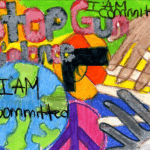
A new organization is urging journalists to rethink how they report on gun violence, advocating for more empathetic, community-focused narratives and less sensationalism. The Association of Gun Violence Reporters, which launched publicly at the end of May, is the latest initiative aimed at reshaping media coverage amid America’s ongoing gun violence crisis.
Backed by the Philadelphia Center for Gun Violence Reporting, the new association offers training, resources and peer support to reporters covering shootings, with a mission to reduce harm and emphasize the root causes of gun violence—including poverty, systemic racism and disinvestment in education and housing.
The initiative arrives at a time when journalists are increasingly reflecting on the impact of their reporting. In 2022, more than 48,000 people died from gun-related injuries, according to the Centers for Disease Control and Prevention. The nonprofit Gun Violence Archive reports more than 41,000 deaths so far in 2024.
AGVR’s launch is part of a broader push for narrative change within the industry. Research from Jessica Beard, director of research at the Philadelphia center, suggested that traditional media coverage of firearm violence can exacerbate trauma in affected communities.
For Brian Munoz, visual editor and reporter at St. Louis Public Radio, slowing down and centering community voices is a vital part of his newsroom’s approach.
“Reporting on gun violence in the Midwest and across the country needs to slow down,” Munoz said. “It needs to be more thoughtful and more compassionate. Journalists need to think about the long-term implications of what we are reporting.”
Munoz, who covered his first school shooting in St. Louis in October 2022, said reporters often have to build trust quickly during moments of crisis. He emphasized the importance of accuracy, especially when newsroom pressures to be first can overshadow ethical considerations.
“Sometimes information comes through that may not be 100% accurate,” he said. “The ethical conversations that we’re speaking about aren’t happening at a larger scale when you’re fighting the clock.”
St. Louis Public Radio, Munoz said, prioritizes ethical deliberation over speed, aiming to produce work that is “compassionate and community-centered.”
For Francia Garcia Hernandez, a local news reporter at Block Club Chicago, gun violence reporting is often part of her work because she covers parts of the city where gun violence rates are higher.
“Sometimes we’ve done trend stories where we’re looking at a series of incidents and that’s when we have more time to do more in-depth reporting,” Garcia Hernandez said. “But sometimes, we just have to report that there was a gun violence incident and just go with more of the immediate news.”
She believes that in the Midwest, specifically in Chicago, there is a lack of stories about the causes of gun violence and its long-term impact. A lot of news doesn’t cover enough about the context and essential considerations for preventing future incidents.
“It’s also important for journalists to make sure the human impact is not lost. It goes beyond what happens a year after someone lost someone to gun violence,” Garcia Hernandez said. “What happens three years after? How did that affect and change other people’s lives? Because that’s something that we don’t often hear as well.”
Garcia Hernandez considers that journalists should pay more attention to local and national data for reframing their stories.
“Even if we are reporting on an incident or a series of incidents, it is important to contextualize whether that’s through city data, through national data, through local data, “ Garcia Hernandez said. “But to show that this is not necessarily just one incident due to one particular demographic or one particular community.”
AGVR co-director Sammy Caiola knows the challenge of responsible reporting firsthand. She was the country’s first dedicated gun violence prevention reporter, based in Philadelphia during the city’s 2021–2022 surge in shootings.
“There were so many people experiencing so much pain in the city,” she said. “I felt really responsible as a journalist not to harm these people further.”
Caiola’s experience helped shape AGVR’s collaborative model, which encourages journalists to support one another when reporting overwhelming or traumatic stories.
Also leading AGVR’s efforts is Abené Clayton, a reporter for The Guardian US and lead journalist on its “Guns & Lies in America” series. Clayton, who focuses on gun violence in Black and brown communities, said much of the current coverage fails to address systemic causes.
“There are so many situations that happen in communities that defy the typical binary narrative,” Clayton said. “It’s not about magazine gun bans. It’s not about the Second Amendment. It’s really down to human circumstances, unaddressed trauma, failings of the criminal justice system.”
AGVR’s resources include research briefs, reporting toolkits, and updates on legislation and litigation. It also provides guidance on centering survivor voices and using language that avoids retraumatization.
Eric Marsh, operations director at the Philadelphia Center and leader of the AGVR project, said the effort is ultimately about changing how stories are told.
“It’s really important for us to unpack what narrative change means and what it looks like for journalists covering gun violence,” Marsh said.
